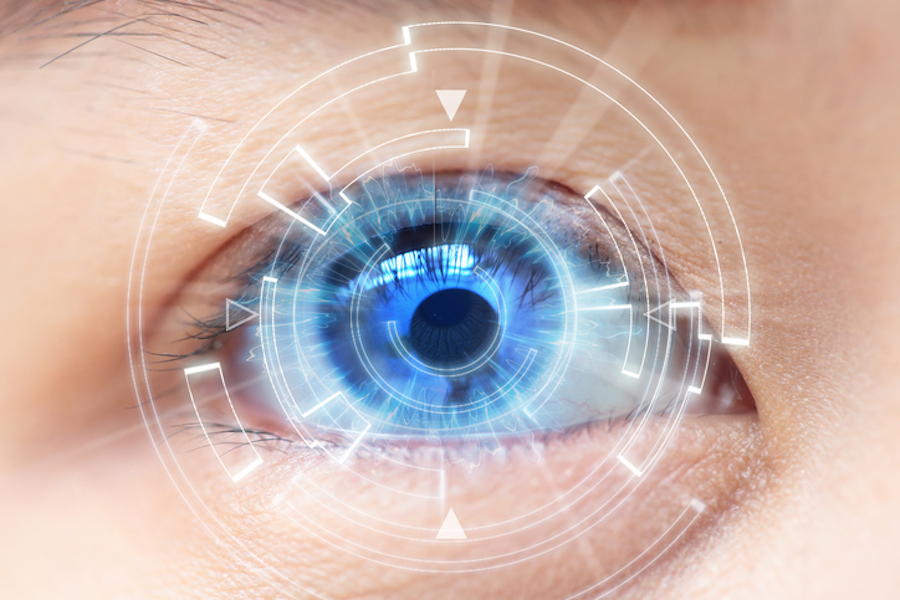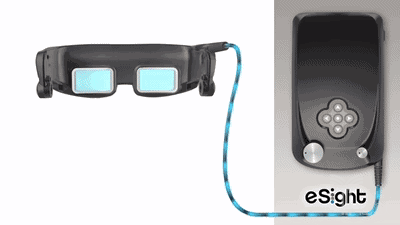Release date: 2018-05-31

In Taiwan, a singer named Xiao Huangqi, who was born blind because of congenital cataract, became amblyopia after 4 years of eye surgery. At the age of fifteen, Xiao Huangqi was blind again after seeing the light for many years, but he has always been optimistic, loves music and creation, and a "you are my eye" based on himself, turned out to be all in the dark. Visually impaired people bring encouragement and warmth.
"You are my eye, take me to see the changes of the four seasons." When the AI ​​is to assume the role of "eyes", can it bring the world to the visually impaired? Does it meet the real needs of the visually impaired?
From perception to "seeing": endless "helpful" products
It must be said that while the giants are advancing cutting-edge technology, they have not forgotten the care for the vulnerable group of visually impaired. A large number of products and technologies that help visually impaired patients have sprung up. After the previous year's keynote speech, Microsoft told that artificial intelligence and smart glasses helped the blind to "see" the world. This year, once again, artificial intelligence was mentioned to help blind students overcome communication barriers. The warmth revealed in these technologies not only reflects the business. The care of the visually impaired group is also the best brand advertisement for the technology giant.
Intelligent relativistic analyst Yan Wei has sorted out various types of smart products related to visual impairment, and roughly divided them into three types:
1. Curve saving the country: Generally speaking, the channels that visually impaired visually impaired patients can recognize the outside world are other sensory feelings other than vision, such as hearing, smell and touch. For example, when Helen Keller’s teacher taught her to recognize “water,†let her extend a hand to sense the flow of water and spell the word on Helen’s other hand.
Based on this, the Munich company and the Korean company jointly completed a Braille smart watch for the blind, equipped with a Braille display system to present various information in the form of Braille on the touch dial of the watch.
The camera also gives a touch form. A designer from the United States designed a to see 3D camera for the visually impaired. This camera can convert the captured object into three-dimensional touch data in real time through the lens, enabling the visually impaired to create a three-dimensional shape by touching the surface of the screen. Identify facial details, such as reading expressions.

3D camera
Of course, in addition to touch, there will be less hearing. IBM introduced an invention of the barrier-free environment - the new navigation app NavCog designed for the blind. NavCog can “whisper†through headphones and people with intellectual disabilities to help people identify their location and orientation in real time, and to identify acquaintances on the way.
2, external force blessing type: visually impaired people are usually divided into two types, one is full blindness, refers to total loss of vision, the other is amblyopia, that is, visual acuity is less than 60% of ordinary people, among the visually impaired, amblyopia group To nearly 70% of the ratio. In the face of such groups, it is necessary to make a smart glasses for them.
For example, a product called eSight, combined with the algorithm and part of the blind person's own needs, through the liquid lens technology in the controller for "focusing", the visually impaired can use the Bioptic tilt function in the glasses, not only can adjust the pupil distance (focus) You can also adjust the sharpness (color, contrast, brightness) of the image to “regain the lightâ€.

Esight
3, straightforward type: the production of vision depends on three major organs: eyeball (mainly retina), optic nerve, visual cortex. For visually impaired patients, if you want to "have a hundred" and restore vision, you must develop a prosthesis that can replace these three tissues, namely retinal prosthesis, optic nerve prosthesis and visual cortex prosthesis.
The research team in China has produced artificial retinas, which consist of two parts: the in vivo electronic microsystem and the in vitro electronic system. The method of use is to implant an IC chip inside the patient's eyeball for receiving information and conducting electrical signals. Then the blind is equipped with an external receiving system, such as glasses.
"The black in front of you is not black, what white is you talking about?"
Even if the current smart "assist" products abound, it is not easy to really open the curtains in front of the visually impaired patients.
First of all, when we continue to increase the amount of information that visually impaired patients receive on other senses, it will bring a lot of trouble. For example, products that start with hearing tend to let the user wear headphones, which will make the blind person isolated from the surrounding sounds, and it is easy to cause danger when traveling. Without the electronic broadcast of the headphones, it is easy to cause the patient's information to leak.
When we continue to apply smart products to visually impaired patients, in addition to bringing them convenience in life, we want them to see this beautiful world and explore the world without barriers. When we use a technical idea that uses other senses to aid vision to achieve objective barrier-free, it will certainly be different from the subjective barrier-free accessibility of visually impaired patients.
Secondly, wearable devices have been worn for a long time, especially on the eyes, and people are more or less uncomfortable. I think when we watched 3D movies in the cinema, 3D glasses also made us dizzy, and immersive technology is also very easy to bring dizziness, nausea and other reactions. In addition, wearing smart glasses limits the visual range of the side perimeter, and it is not easy for visually impaired patients to move and work like normal people.
Then, the artificial retina technology has a strong comprehensive and complex nature, and scientists and engineers in more than a dozen disciplines such as machine vision, IC design, semiconductor technology, nanotechnology, neuroscience, and biological materials need to fully invest and cooperate closely. No. But even with such a high-precision team, outside information is transmitted to the brain through electrical signals, and the blind person feels nothing but a grayscale, mosaic world.
Even the black and white "slag pixel" can barely count "see". Smart products that cannot be considered "seen", such as smart glasses, cognitive assistants, etc., can only provide voice for patients to receive the corresponding information. What the patient can do is that when the "helper" says that there are obstacles in front of him, please turn around when you are around, and you can't see for yourself whether the obstacle that blocks you is a stone or a bicycle.
Finally, the biggest problem with these intelligent “assist†products is that they are too costly and expensive, which is difficult for the average person to afford. Due to the different blinding factors, many blind people need highly customized smart products, which leads to high costs. Even bionic eyes can't be applied to all visually impaired patients. For example, the biomimetic lens developed by Ocumentics, a Canadian medical technology company, last year was only suitable for adults over 25 years old. In addition, it has corneal opacity, cataract surgery, and severe Patients with diseases such as macular degeneration, severe hereditary retinopathy, and optic nerve damage are also not suitable for this therapy.
Visible, to understand the expression as the standard
In the final analysis, no matter how dazzling smart products are, for the blind, they care more about the practicality of smart products, and the really practical products are three words for them - visible.
Bionic eyeballs certainly have a large market, but as mentioned above, this treatment is not suitable for all eye diseases. The combination of smart glasses and chips is universal, because its visual computing capabilities, face recognition and other functions can receive external information. The chip transmits electrical signals through flexible electrode arrays, stimulates the nerve cells of the retina, and then transmits them to the brain. Let the blind see the black and white image.
But for the market, GM is not special, so who can quickly grasp the highlights of "Universal" and the most difficult problems, who can become a leader in "help".
Neuroscientists believe that "face recognition" has two aspects, one of which is feature recognition, which is also the type of identification currently equipped with smart glasses. The second is expression recognition. In fact, after hundreds of millions of years of evolution, humans have formed six or seven basic expressions closely related to emotions: happiness, surprise, sadness, anger, disgust, contempt and fear. These basic expressions are human instinct and are born without learning.
At present, the difference between facial features and expressions is not clear. When we see a person, the face recognition mechanism in our brain will start to work, and we will judge in a moment whether this face is a familiar face and how the person's expression is. But this moment, it is difficult for the visually impaired patients to go to heaven.
Therefore, letting AI help blind people to see people's expressions may be the real battlefield of intelligent "assistance" in face recognition. The significance of this move is not only the need for AI to identify more subtle facial features, but also to obtain a clearer pattern for the blind, rather than a blurred image.
A study by the British "Lancet Global Health" predicts that the current number of blind people worldwide is 36 million. If the treatment of eye diseases is not strengthened, it will increase to 115 million by 2050. This is an amazing enough data, and with the power of technology, we hope that every blind person who is struggling in life, regardless of their age, environmental condition, poverty or wealth, they all look at the beautiful world like a discerning person. s right.
Source: billion euros
Colorant Fruit Powder,Curcumin Powder,Water Soluble Curcumin Powder,Water Soluble Curcumin Yellow Powder
Fufeng Sinuote Biotechnology Co.,Ltd. , https://www.ffsinuoteplant.com